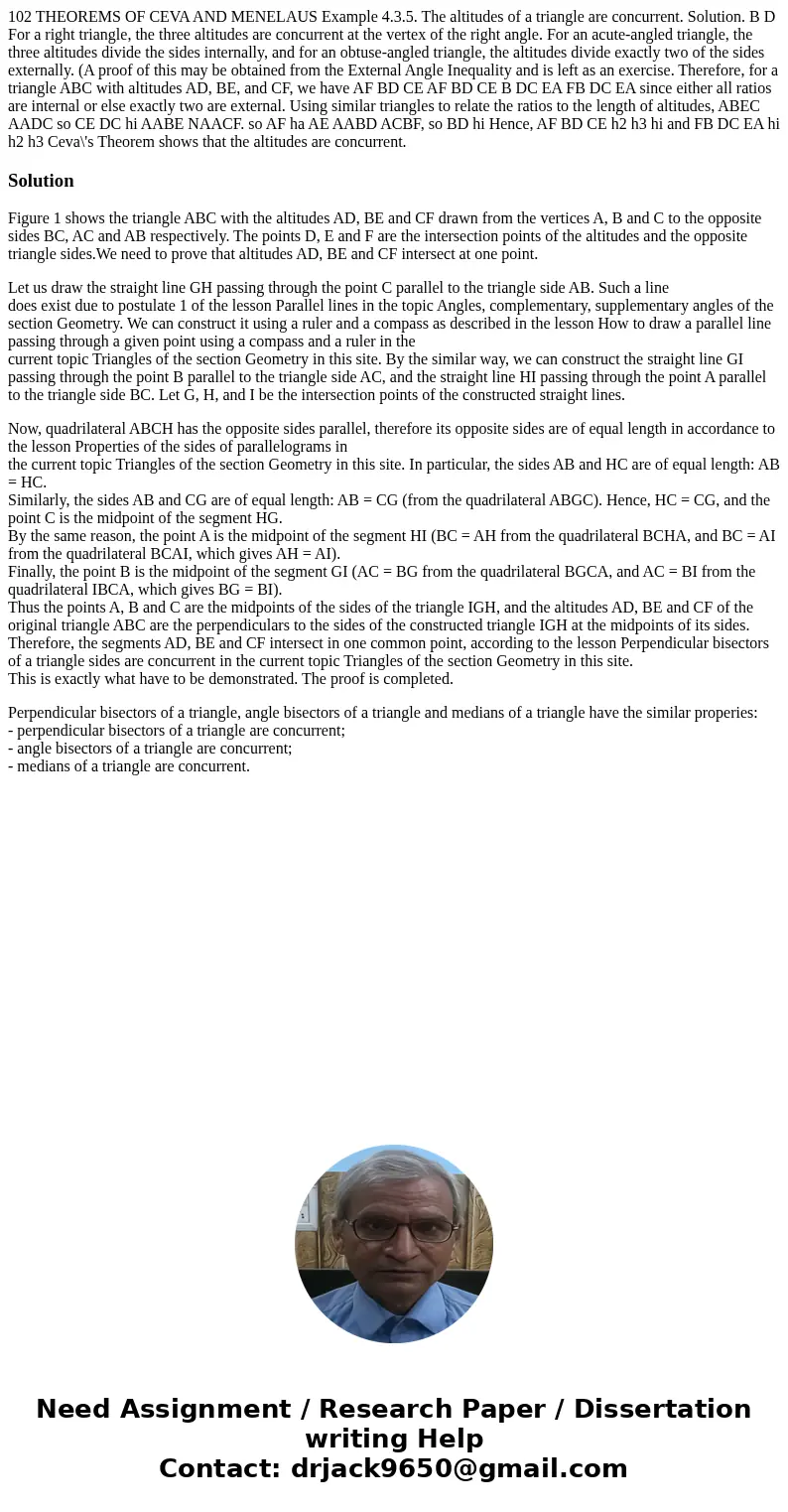102 THEOREMS OF CEVA AND MENELAUS Example 435 The altitudes
Solution
Figure 1 shows the triangle ABC with the altitudes AD, BE and CF drawn from the vertices A, B and C to the opposite sides BC, AC and AB respectively. The points D, E and F are the intersection points of the altitudes and the opposite triangle sides.We need to prove that altitudes AD, BE and CF intersect at one point.
Let us draw the straight line GH passing through the point C parallel to the triangle side AB. Such a line
does exist due to postulate 1 of the lesson Parallel lines in the topic Angles, complementary, supplementary angles of the section Geometry. We can construct it using a ruler and a compass as described in the lesson How to draw a parallel line passing through a given point using a compass and a ruler in the
current topic Triangles of the section Geometry in this site. By the similar way, we can construct the straight line GI passing through the point B parallel to the triangle side AC, and the straight line HI passing through the point A parallel to the triangle side BC. Let G, H, and I be the intersection points of the constructed straight lines.
Now, quadrilateral ABCH has the opposite sides parallel, therefore its opposite sides are of equal length in accordance to the lesson Properties of the sides of parallelograms in
the current topic Triangles of the section Geometry in this site. In particular, the sides AB and HC are of equal length: AB = HC.
Similarly, the sides AB and CG are of equal length: AB = CG (from the quadrilateral ABGC). Hence, HC = CG, and the point C is the midpoint of the segment HG.
By the same reason, the point A is the midpoint of the segment HI (BC = AH from the quadrilateral BCHA, and BC = AI from the quadrilateral BCAI, which gives AH = AI).
Finally, the point B is the midpoint of the segment GI (AC = BG from the quadrilateral BGCA, and AC = BI from the quadrilateral IBCA, which gives BG = BI).
Thus the points A, B and C are the midpoints of the sides of the triangle IGH, and the altitudes AD, BE and CF of the original triangle ABC are the perpendiculars to the sides of the constructed triangle IGH at the midpoints of its sides. Therefore, the segments AD, BE and CF intersect in one common point, according to the lesson Perpendicular bisectors of a triangle sides are concurrent in the current topic Triangles of the section Geometry in this site.
This is exactly what have to be demonstrated. The proof is completed.
Perpendicular bisectors of a triangle, angle bisectors of a triangle and medians of a triangle have the similar properies:
- perpendicular bisectors of a triangle are concurrent;
- angle bisectors of a triangle are concurrent;
- medians of a triangle are concurrent.

 Homework Sourse
Homework Sourse